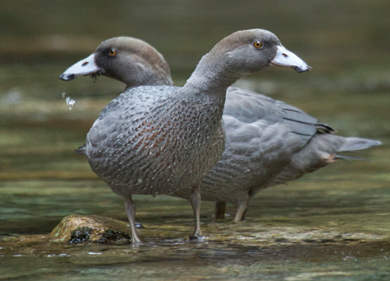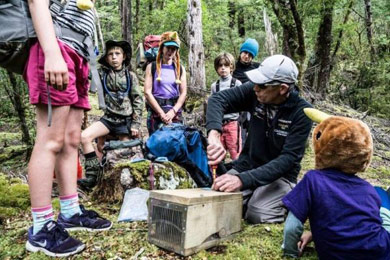Top tips for beginner pest control groups
Introduction
Kick off your community pest control project in the best way possible. Define an achievable goal, keep volunteers safe and find helpful resources.
Blue duck/whio
Image: Sabine Bernert ©
If you're setting up a community group, these tips and resources will help you get started.
Monitor first, trap later
Do you want to get rid of some pests and make things safer for the natives? That’s a great place to start, but killing a few rats might not make a difference to your local plants and animals. You’ll need to kill enough rats.
How will you know you’ve killed enough? That’s where monitoring comes in. It’s a fascinating peek into the changing state of your local nature:
Define a goal
An achievable goal will inform all your pest control and monitoring work. Define an outcome-based goal regarding the species you wish to protect.
Example goals:
- The blue duck/whio population in the Flora stream is maintained.
- Kiwi numbers are stable or increasing.
- Snail populations are restored.
- Indigenous ecosystems are no longer under pressure from possums.
Not sure which native species to protect and monitor? Pick an indicator species.
Plan, collaborate and learn

A group learns about the Matukituki trap line
Image: Kerie Uren ©
Working with others to achieve a conservation task requires skill and commitment:
General community project advice
- DOC’s community project guidelines
- Regional councils usually offer advice via their websites.
Add your group to the Predator Free 2050 Trust website once you’re up and running, so that others can find you and you can join the PF2050 community.
Permissions
Seek permission from the relevant landowners. If the land is public, contact the appropriate authority, such as your local council or DOC.
Not sure who to ask? Talk to your nearest Predator Free Ranger. They’ll connect you with DOC or council staff for advice.
Funding
Find funding for your Predator Free 2050 community project:
Set up a registered charitable trust to increase your chance of finding support.
Safety
Make sure your group’s members know how to stay safe when using pest-control equipment and working outdoors.
